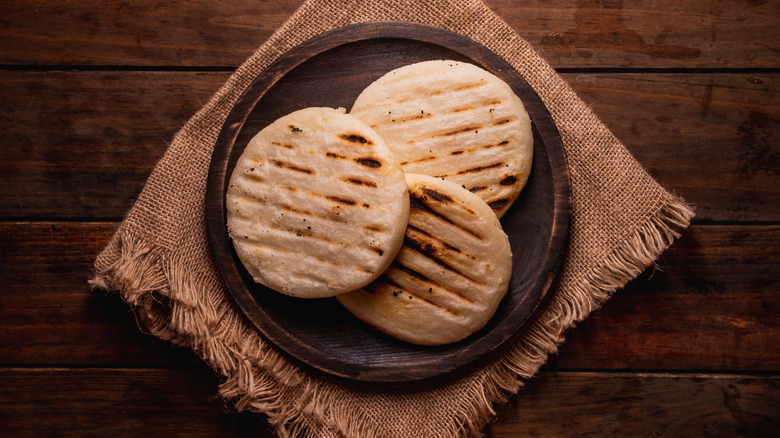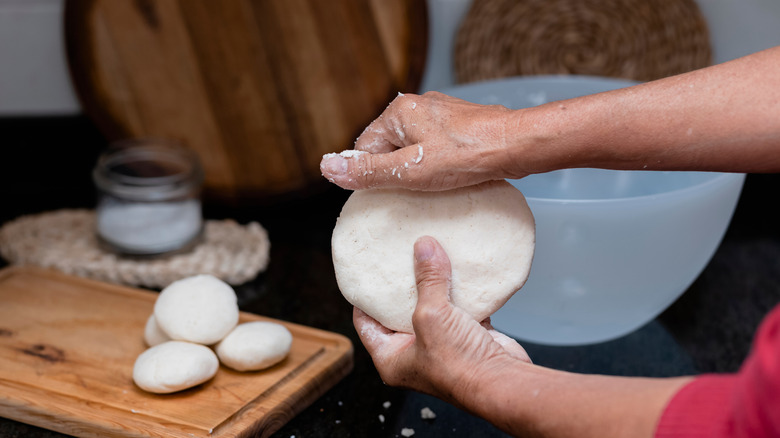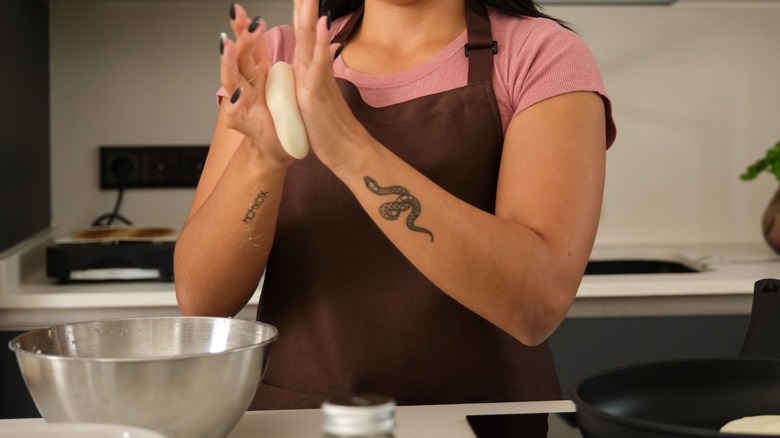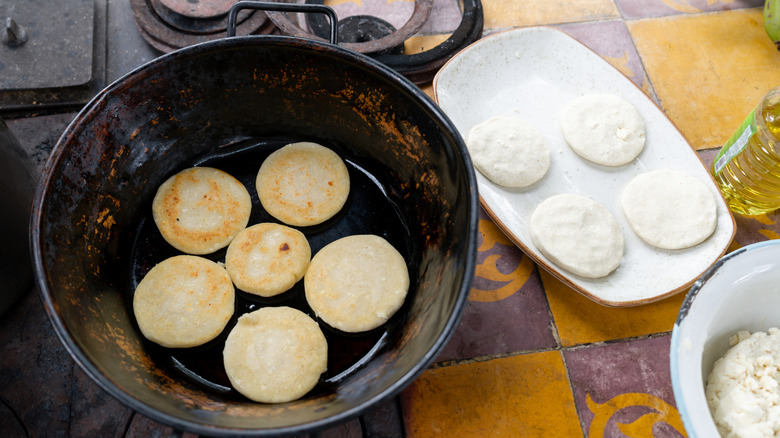The 3 Mistakes That Are Ruining Your Homemade Arepas
Arepas are one of the many types of flatbread that we love to cook since they only take three ingredients to make. But as anyone who's tried cooking arepas themself knows, getting the texture and consistency right is easier said than done. To learn more about common mistakes people are making with their homemade arepas, we reached out to Ronaldo Linares, private chef and media personality.
"I think the most common mistake people make is not adding enough water to the dough," Linares told Tasting Table. "The second is underworking it — you need to knead the arepa dough well to achieve the perfect texture. Lastly, not cooking it at the right temperature can ruin the final result"
These are some great insights that can really help you fine tune your arepa game. The unfortunate thing about making arepas is that it's a little difficult to convey just what arepa dough should look and feel like. While corn flour products will often give instructions on how to make arepas on the package, they don't always give enough details for newcomers to truly understand what they should be looking for. Luckily, the recipe for arepas is easy, so even if it takes some work to fine tune the dough, this is one skill you won't have to learn twice.
Getting the water and corn flour ratio right
A common misconception about arepa dough is that the water and corn flour should be mixed in a 1:1 ratio, but this isn't the case. A more precise recipe will call for 2 ½ cups of lukewarm water mixed with 2 cups of corn flour. That may not seem like a huge discrepancy, but the difference of even one tablespoon of water can have a major impact on how your arepas turn out. Too much water, and the dough will be overly sticky and wet, while too little gives it a rough, sandy texture.
The easiest way to do this is to simply add the water and corn flour into a bowl and mix them together. From there, you can adjust the ratio by adding either more water or more corn flour depending on what you need. If you're concerned about adding too much water, you can always start by adding less than you think you'll need and then slowly adding more once the bulk of the ingredients are combined. If you're familiar with making homemade tortillas, you may feel ready to branch out into arepas, just keep in mind that all of the great tips for making tortillas that you've compiled over the years don't necessarily translate to arepas; tortillas don't need nearly as much water, for example.
Working the dough into the right consistency
While you're getting the water ratio right, you're also kneading the dough at the same time, which is where Linares' second tip comes into play. If you don't adequately knead the dough, you could end up with small air pockets, or dry spots, where the water never got to. That can lead to an unpleasant surprise when you go to take a bite only to discover a big chunk of raw corn flour waiting for you. That's an extreme example of what can go wrong, but proper kneading alleviates many potential problems with the dough.
The important part is to take your time with the process. You don't necessarily need to get aggressive with your kneading so long as you're being thorough. A little elbow grease is plenty so long as you're paying attention. Apart from making sure there are no dry spots in the dough, you'll want to take notice of the consistency, which will resemble Play-Doh. It shouldn't stick to the bowl or whatever surface you're using and it should maintain its shape somewhat. If you press your finger against it, there should be no residue on your finger when you pull away, and the indent should remain visible after your finger has been removed. When you're finished, let the dough rest for 10 minutes before cooking.
Cook with the proper heat for a crisp exterior
You've worked hard and are now sitting on a great piece of dough, so let's make sure we're cooking it properly. There are two common methods for cooking arepas. Some people prefer to cook it purely on the stovetop with a little oil, while others will start by using the stovetop before finishing the arepas in the oven. Whichever method you prefer, getting the stovetop temperature right will ensure that you have the crisp, golden exterior that we all love.
Medium-high heat should work fine, but don't put the arepas in before the skillet or pan has reached a high enough temperature. It won't work to slowly cook them while you wait. You don't want to ruin non-stick pans by dry heating them, either, so add some oil while it's heating up to protect the non-stick coating.
From here, the specific directions and tips will vary depending on how you plan on cooking your arepas. If you plan on finishing them in the oven, you can cook the arepas in batches on the stovetop, flipping them every four minutes. Ideally, you'll get some browning or even a nice char on parts, though be careful to avoid burning them outright. Once they're finished, try using warm arepas to upgrade your ice cream sandwiches, or find other creative ways to use these tasty Central and South American staples.



